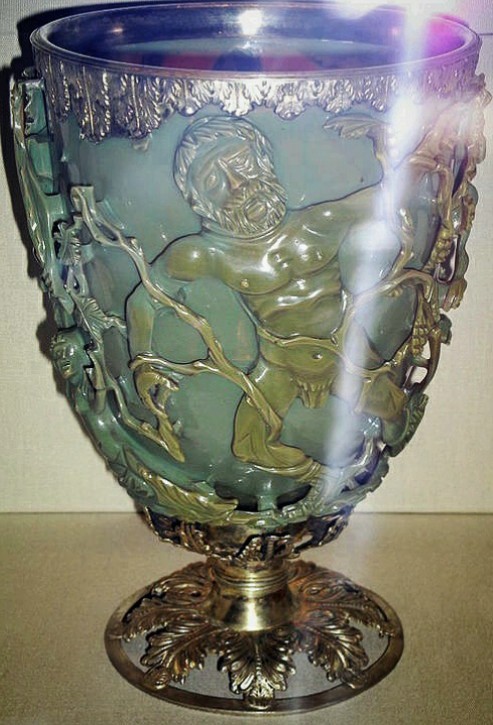The Lycurgus Cup: Evidence Of 1,600-Year-Old “Nanotechnology”
According to scientists, nanotechnology was initially discovered in ancient Rome about 1,700 years ago, and this is not one of many examples of modern technology attributed to our sophisticated society. A chalice dating 290 and 325 AD is final proof that ancient cultures used advanced technology thousands of years ago.
Nanotechnology is perhaps one of the most significant developments in recent decades. The explosion of technology has allowed modern man to work with systems between a hundred and a billion times smaller than a meter, where materials acquire unique properties. However, the beginnings of nanotechnology go back at least 1700 years.

But where is the proof? Well, the “Lycurgus Cup,” a relic from the Roman Empire, appears to prove that ancient Roman craftsmen were aware of nanotechnology 1,600 years ago. The Lycurgus Cup is a magnificent example of ancient technology.
The Lycurgus Cup is a 1,600-year-old Roman chalice in jade green. It magically changes color when you put a source of light inside it. When you add a light source, it magically changes color. It appears jade green when illuminated from the front, and when illuminated from behind or the inside, it appears blood-red.
The Lycurgus Cup is regarded as one of the most technically advanced glass artifacts created before the modern age. Experts say that the chalice produced between 290 and 325 is the definitive example of the ancient artisans’ ingenuity.
The scenes from King Lycurgus of Thrace’s death are depicted in the chalice by miniature glass sculptures. Glass appears dull green to the naked eye, but when a light is shined behind it, it transforms into a translucent red color. According to the Smithsonian Institution, this effect is accomplished by embedding small particles of gold and silver in the glass.
The tests revealed exciting results
When British researchers studied the fragments under a microscope, they discovered that the metal particles had been reduced to a diameter of 50 nanometers, equivalent to one-thousandth of a grain of salt.

Today, this is difficult to achieve, but it would have resulted in a massive development that was unknown at the time. Experts also believe that the “precise mixture” of precious metals in the object’s composition demonstrates that the ancient Romans knew what they were doing. The Lycurgus Cup has been housed in the British Museum since 1958.
Ancient nanotechnology that works
But how does it work? Well, when light strikes the glass, the electrons belonging to the metal spot tend to vibrate in ways that change color depending on the observer’s position. Adding gold and silver to glass, on the other hand, does not automatically produce that particular optical feature. To do this, a meticulous and precise technique is required that many specialists rule out the possibility that the beautiful sculpture was created by chance, as some suggest.
Furthermore, the precise metal composition implies that the Romans figured out how to employ nanoparticles. They discovered that adding precious metals to molten glass could make the glass turn red and produce unusual color-changing effects.

However, according to the authors of the study “The Cup of Lycurgus – Roman Nanotechnology,” the technique was too sophisticated to last. However, the magnificent cup inspired modern nanoplasmonic study centuries later.
“In ancient Rome, people knew how to manufacture and use nanoparticles to achieve beautiful art. We’re interested in seeing if this could have any scientific application.”, said Gang Logan Liu, an engineer at the University of Illinois at Urbana-Champaign.
The episode of Lycurgus’ madness is shown in the upper register of this ritual water vessel. After killing his wife, the Thracian king threatens Dionysus with his sword. Aeschylus wrote a (lost) tetralogy about the legend of Lycurgus, and the Thracian king sometimes appeared on ancient vases, murdering his wife or son.
The original 4th century AD Lycurgos cup, probably taken out only on special occasions, depicts King Lycurgus caught in a tangle of grapevines, probably due to atrocities against the Greek god of wine, Dionysus. When the inventors succeed in developing a new detection tool based on this ancient technology, Lycurgus will be the next one to do the ensnaring.



